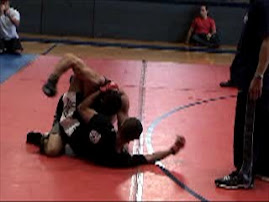 Yesterday I read a Telegraph story about Australian sprinter Jana Rawlinson, the two-time World Champion (2003, 2007) in the 400 meter hurdles. Rawlinson’s personal record in the 400m hurdles is 53.22 seconds, and 50.43 seconds in the open 400m. The story explains how Rawlinson recently had her breast implants removed so that she would maximize her chances at the 2012 Olympic Games.
Yesterday I read a Telegraph story about Australian sprinter Jana Rawlinson, the two-time World Champion (2003, 2007) in the 400 meter hurdles. Rawlinson’s personal record in the 400m hurdles is 53.22 seconds, and 50.43 seconds in the open 400m. The story explains how Rawlinson recently had her breast implants removed so that she would maximize her chances at the 2012 Olympic Games.What struck me about this story was that someone so innately gifted and athletically driven would ever feminize herself via plastic surgery in a way that would inevitably harm her athletic performances.
Speaking from past experience in Rawlinson’s specialty (the 400 hurdles), I can say with a mild degree of expertise that once somebody reaches a certain level of success, the most minute details matter immensely. Being a few pounds over or under weight matters. The proportionality of one’s musculature across his/her legs, arms, shoulders, and torso matters. How much sleep/recovery one gets and stretching one does matters. Mental focus and clarity are crucial in training and formal competitions. As one gets older, diet becomes more critical. The training process becomes a rather complex science.
These details don’t matter as much for those just starting out in track and field (or other sports), because in the early stages of one’s career, people just need to learn the fundamentals of running (and hurdling) and they need to get in sprinting shape. But upon reaching a highly competitive level, every tiny detail escalates in importance. For in track and field, a hundredth of a second can literally mean the difference between qualifying for the next level or staying behind and having to wait until the next year.
Rawlinson obviously re-shifted her priorities, knowing that having implants would hurt her chances of winning an Olympic medal – something she has yet to accomplish. This notwithstanding, she made the following statements, illustrating the pressure even the world’s elite professional women face in trying to live up to conventional female beauty standards.
"I absolutely loved having bigger boobs, but finally I've grown up enough to know myself; to be honest about who I am when I look in the mirror," Rawlinson told the Woman's Day magazine.
"I don't want to short-change Australia either - I want to feel the most athletic I can, to know that I'm standing on the track in London the fittest I can be."
[…]
"When I looked in the mirror I just saw muscled arms, broad shoulders and big, strong legs," she said. "These are assets I need to run well, but they didn't make me feel like an attractive woman."
"There are a couple of girls - who I won't name - in world athletics who are Olympic champions, but they look like men and I don't want to be like that."
Rawlinson’s experience, while less dramatic, is reminiscent of that faced by Caster Semenya of South Africa last year – the 2009 800m World Champion. Like Rawlinson, Semenya didn’t fit into conventional notions of femininity, and she underwent awful forms of discrimination that may result in her being banned from track & field all together.
But while female athletes with a high degree of musculature are not praised as athletes or women, highly muscular male athletes are praised and supported in the sporting world (as well as in most other social contexts). Consequently, as Rawlinson’s now removed breast augmentation shows, female athletes who do not fit into society’s accepted female box, often go to great lengths to sexualize themselves. In doing so, they gain their own sense of self-esteem (which at one point seemed to be the case with Rawlinson), and/or can acquire corporate sponsors that would otherwise probably not be offered [see examples of Serena Williams and Gina Carano (I am not convinced the covers with Dwight Howard and Adrian Peterson were nearly as sexualized, especially for a sports focused, male-targeted readership)].
Conversely, the more athletic and muscular a male athlete is, the more he will be praised in his line of work. Ironically for female athletes, in some ways, being athletic is a bad thing.









